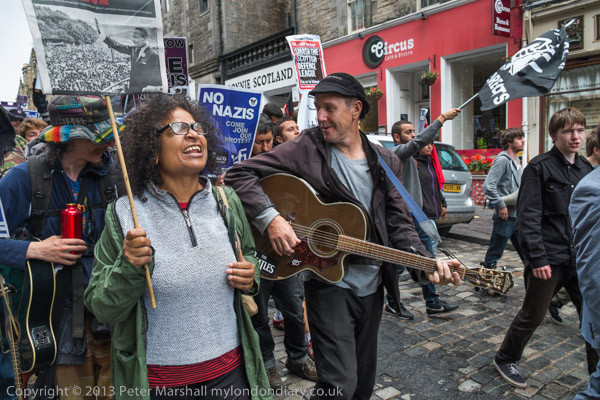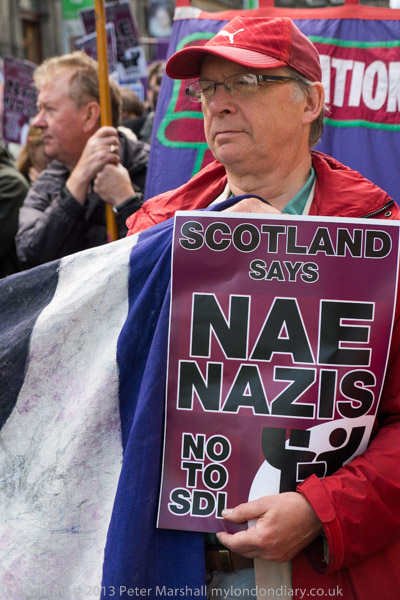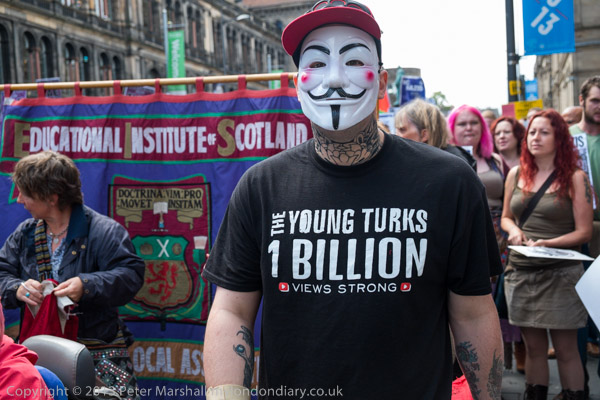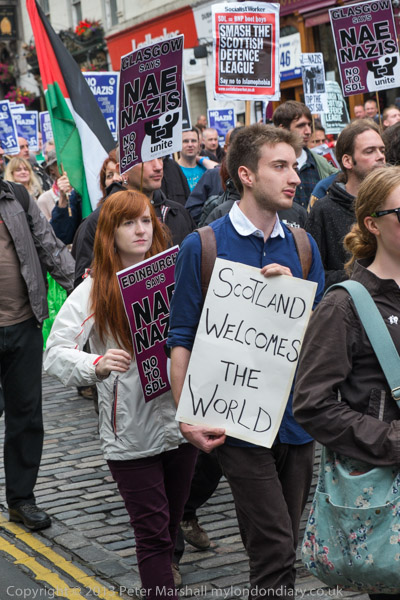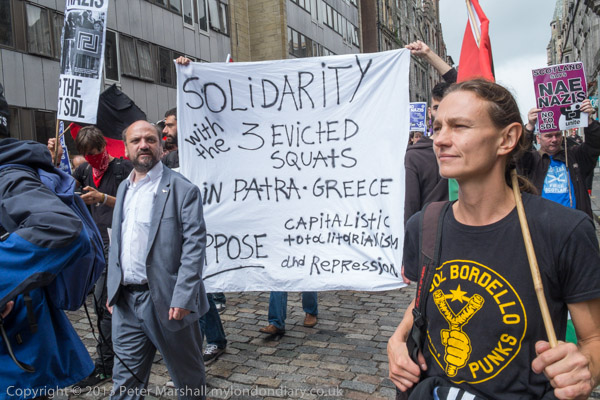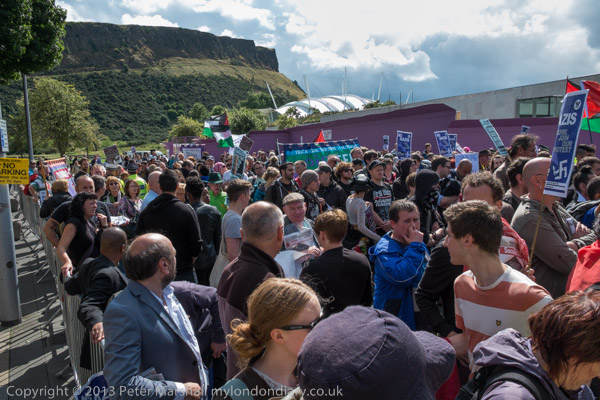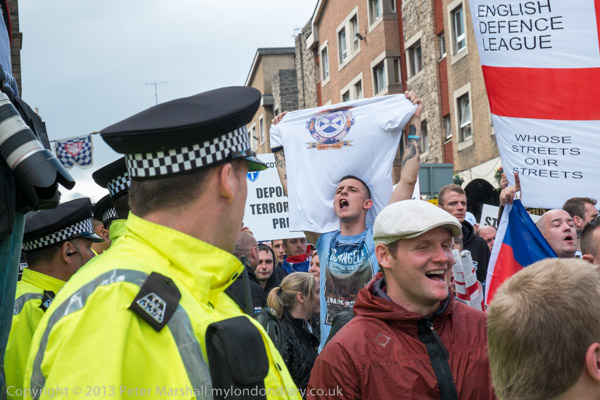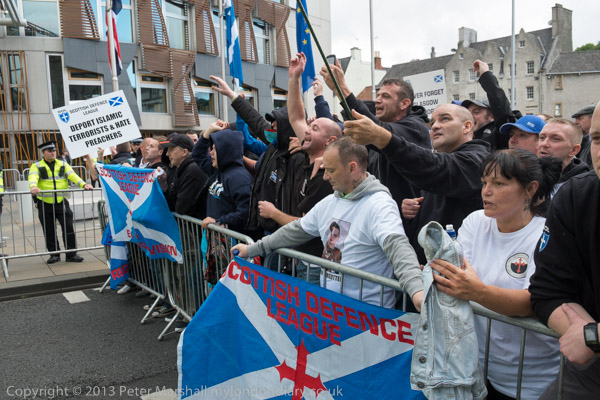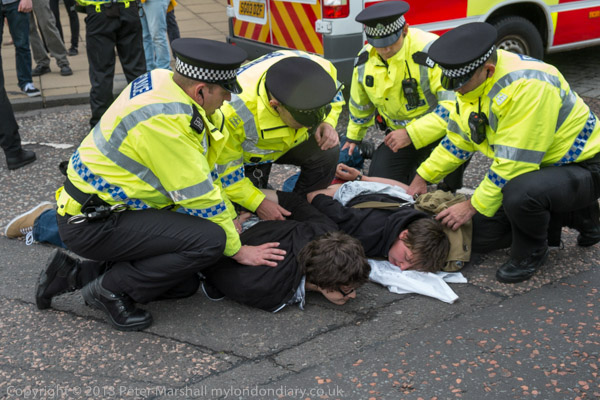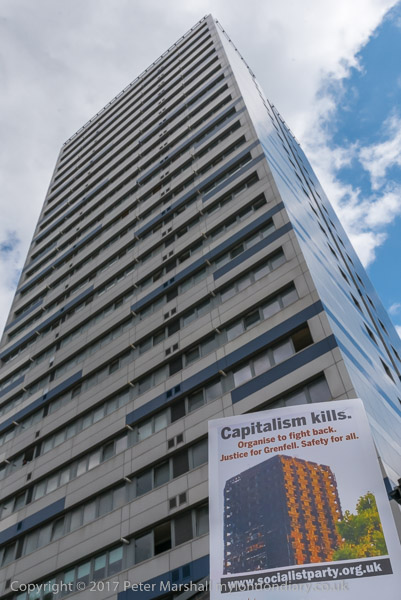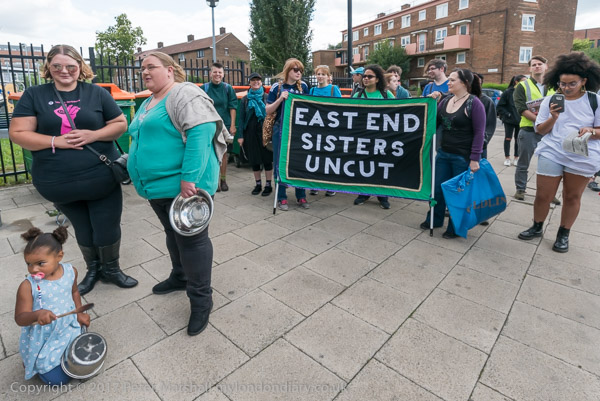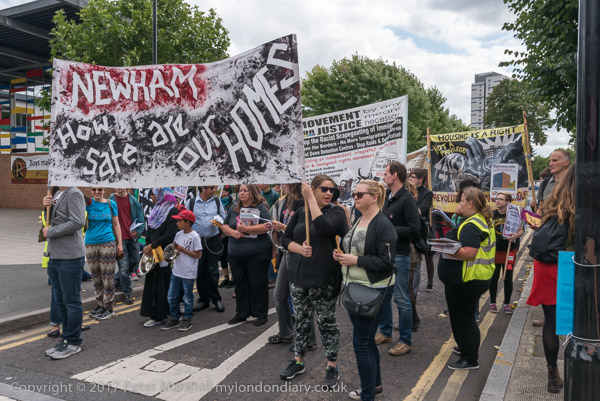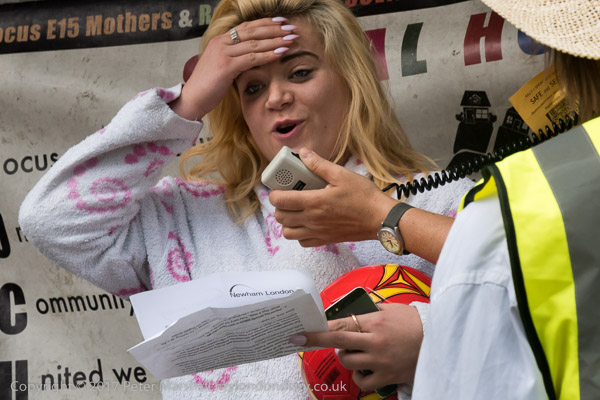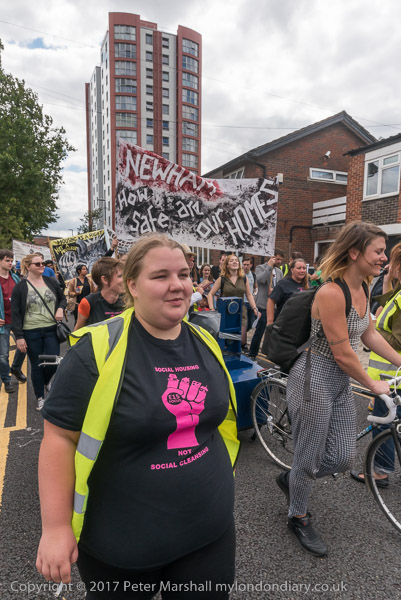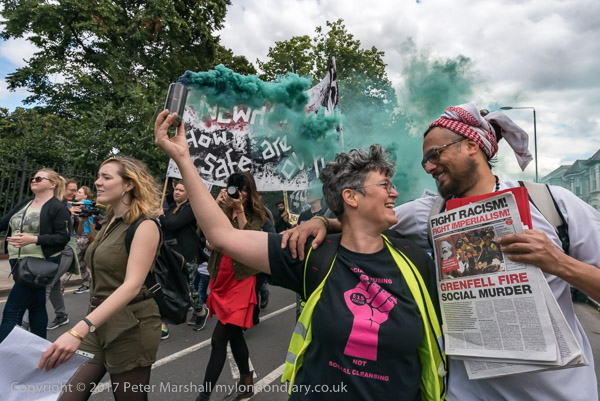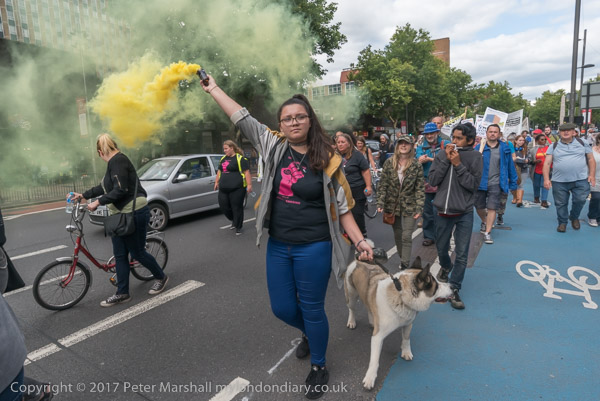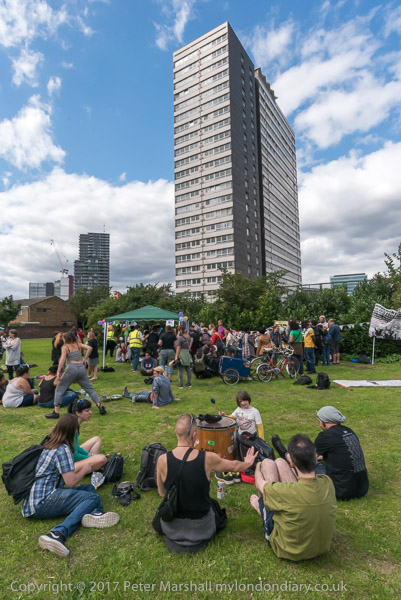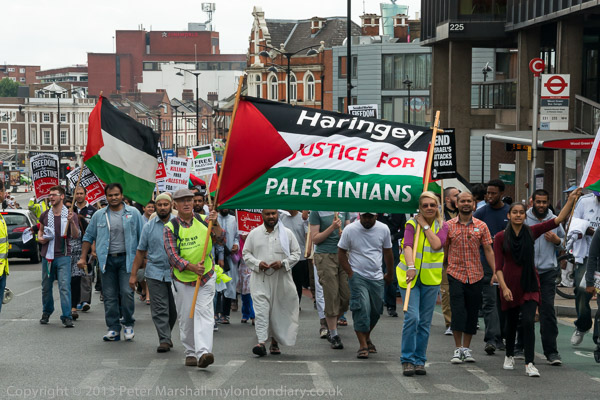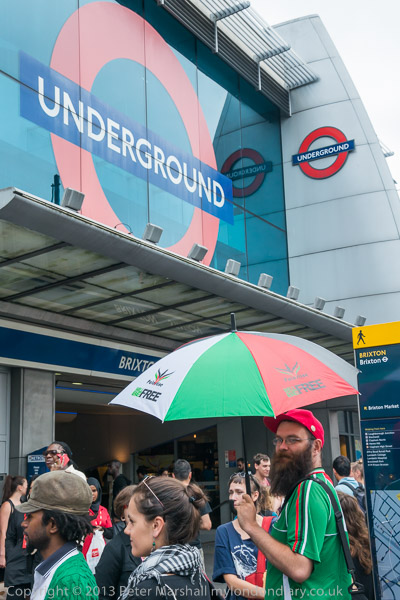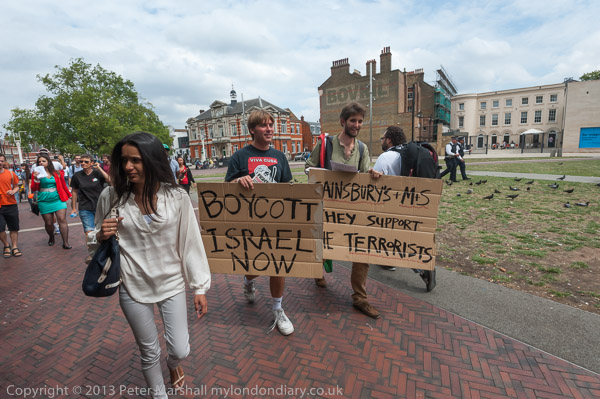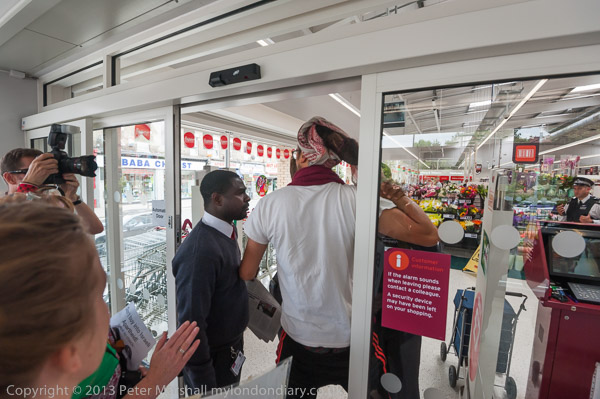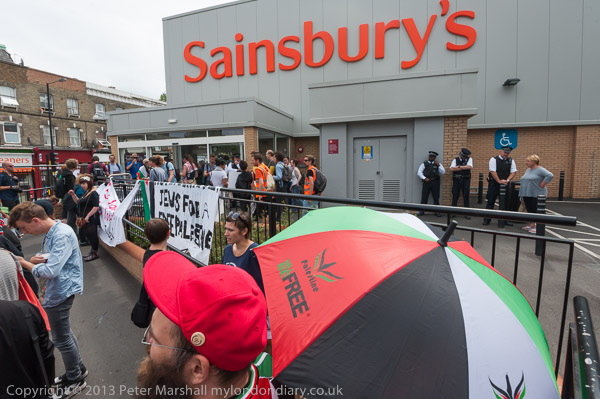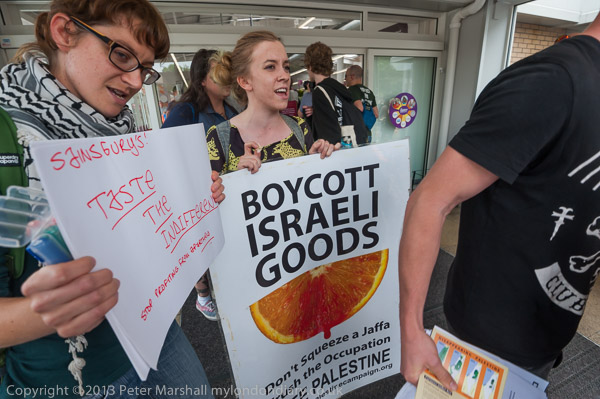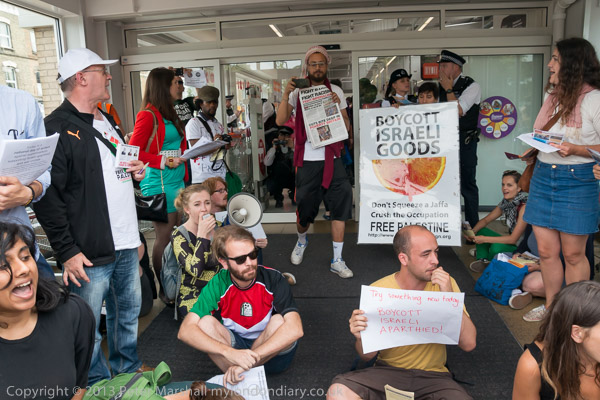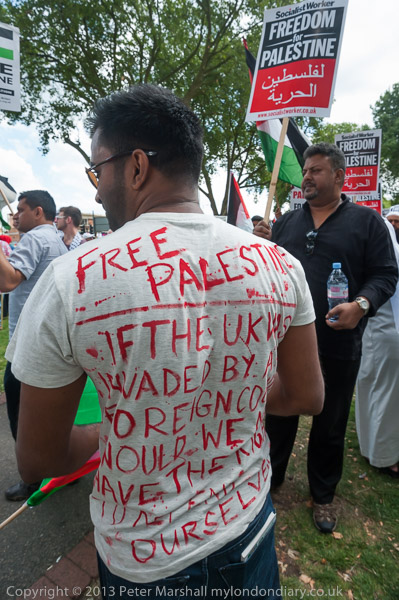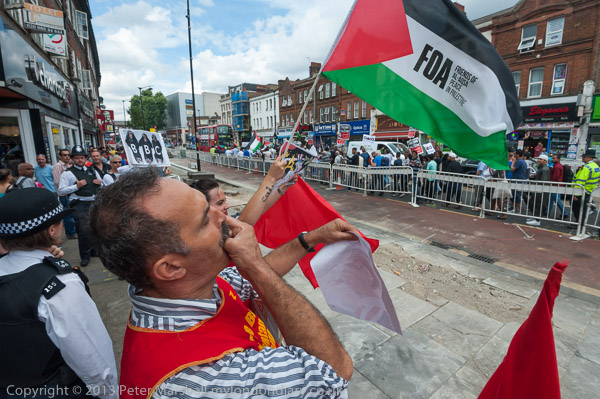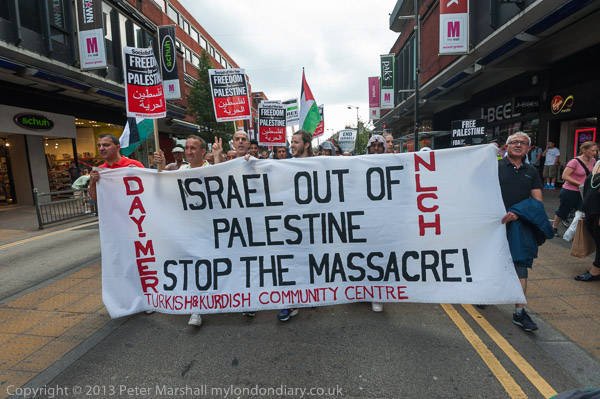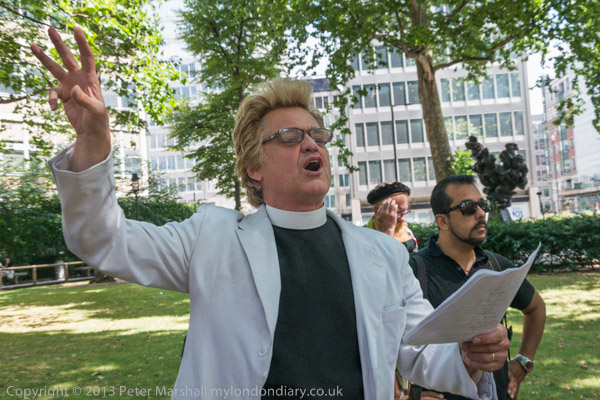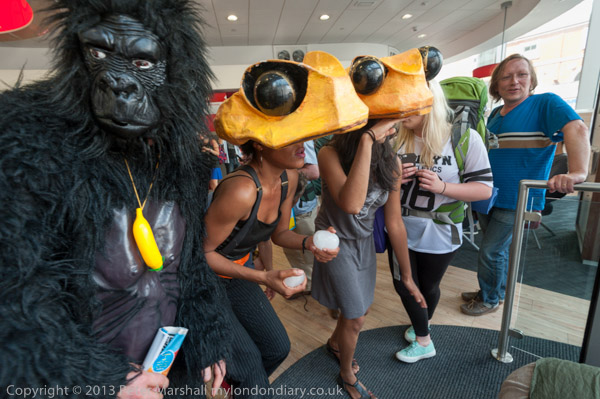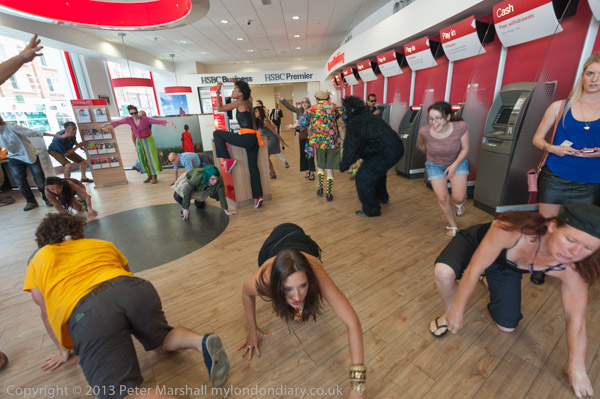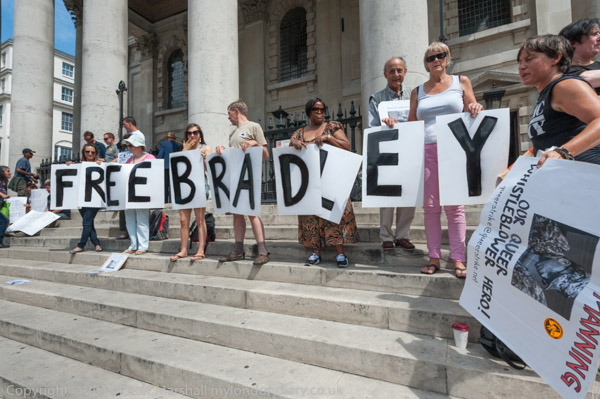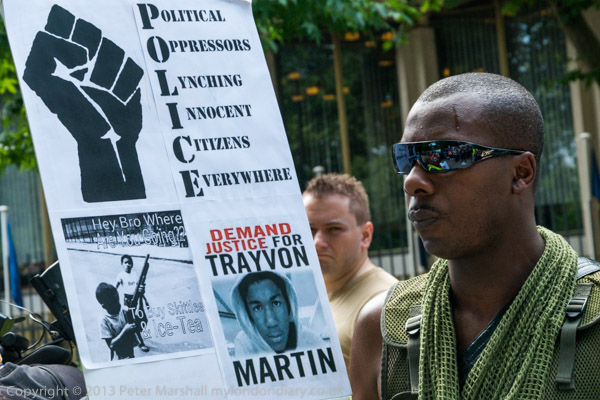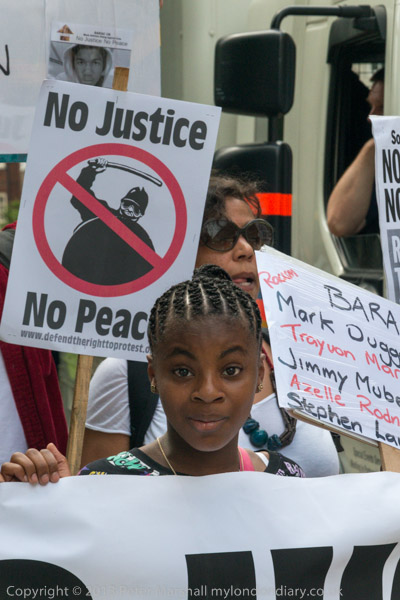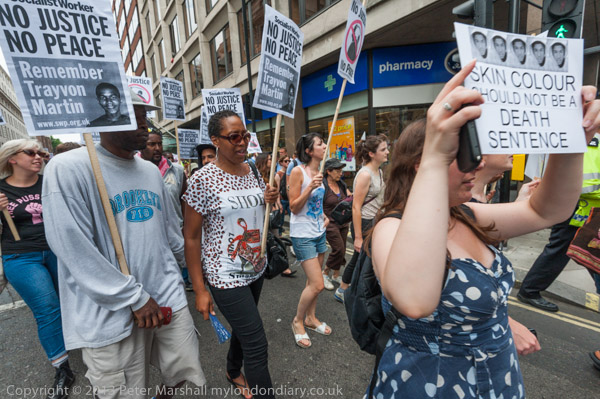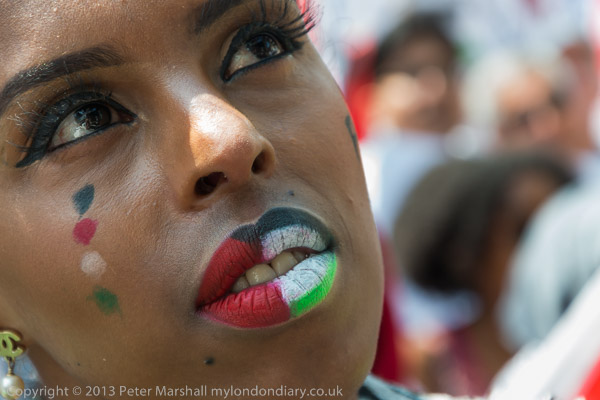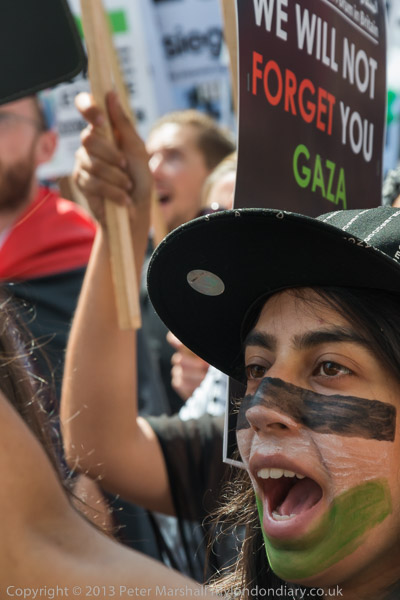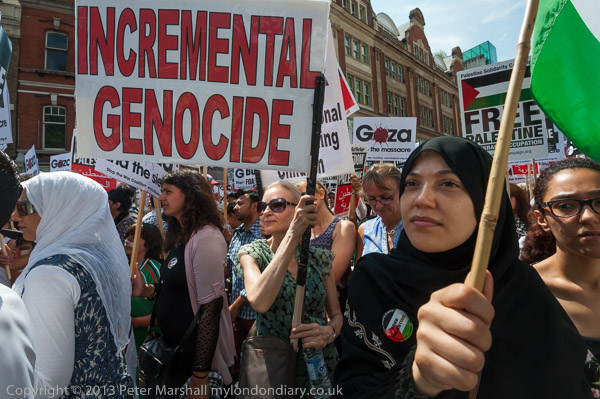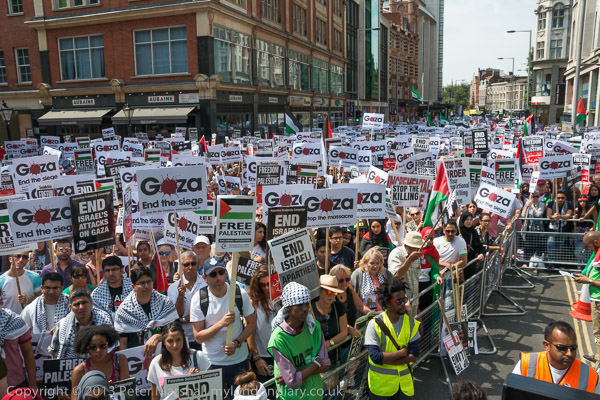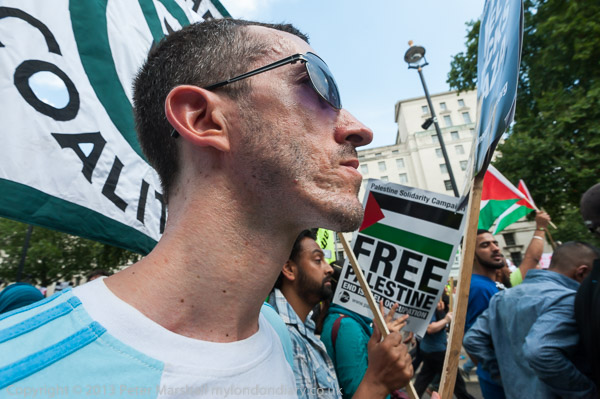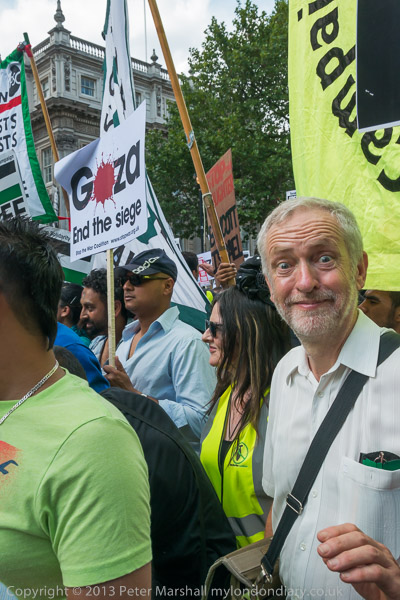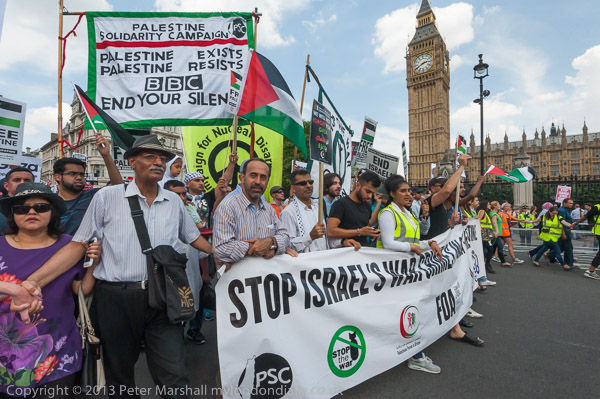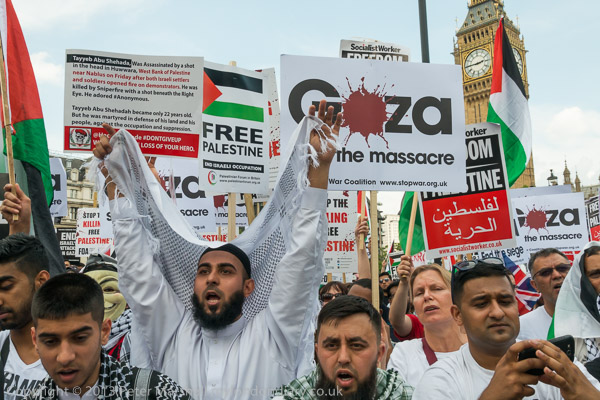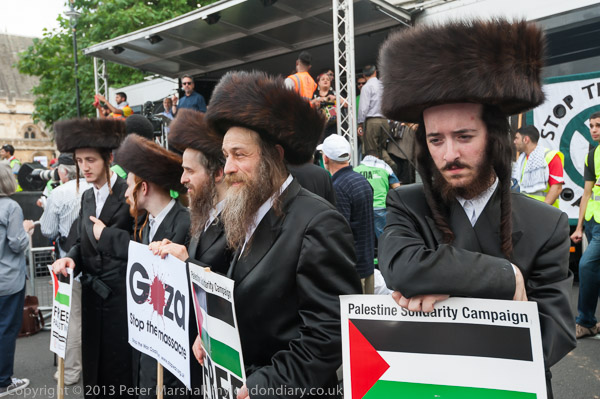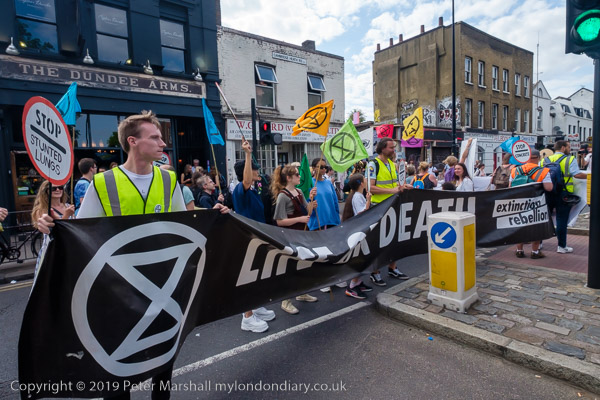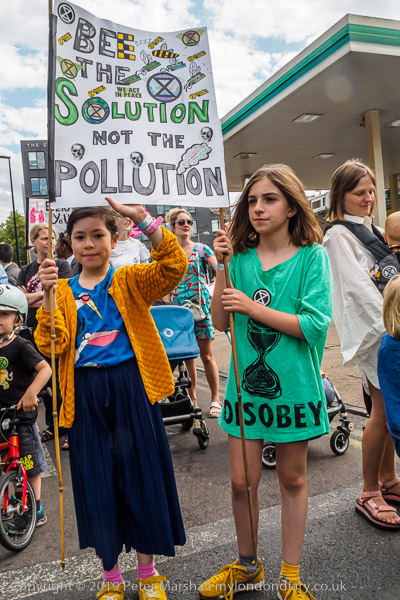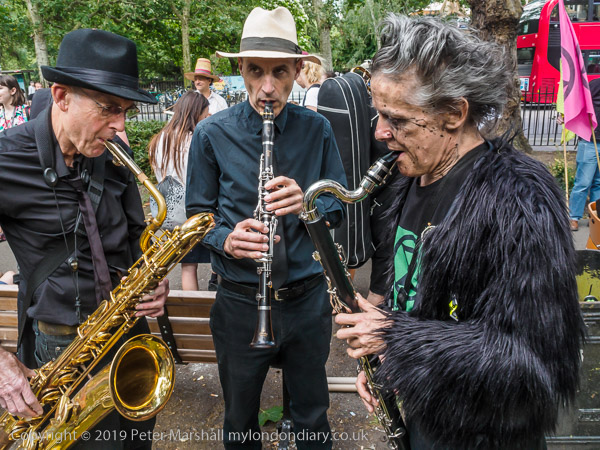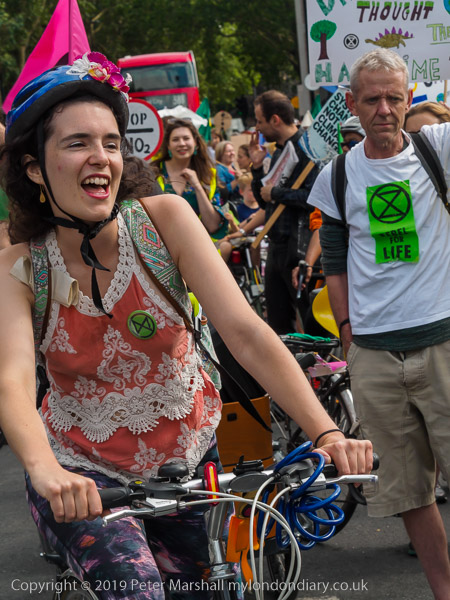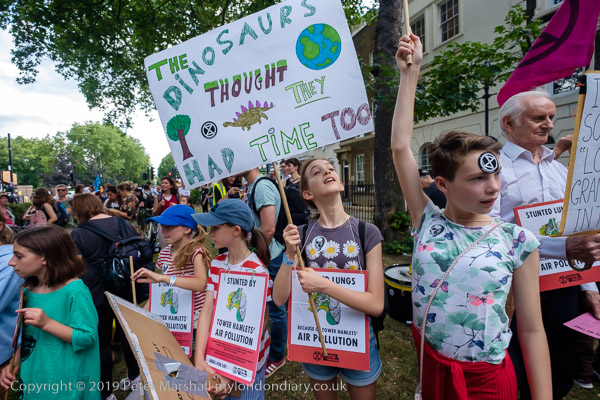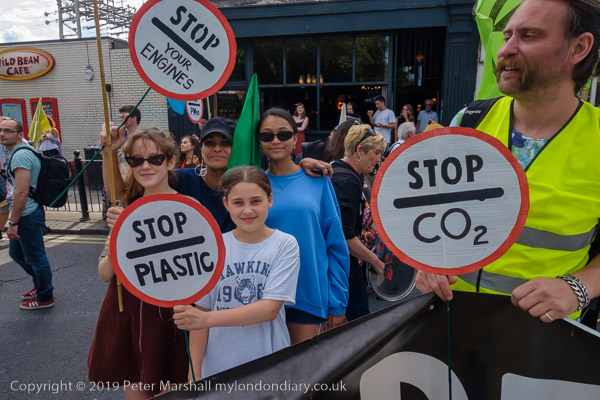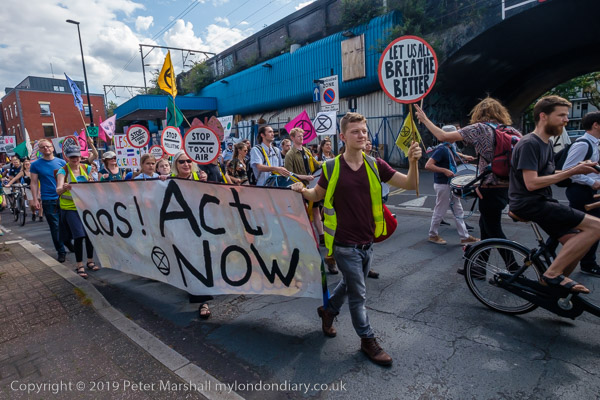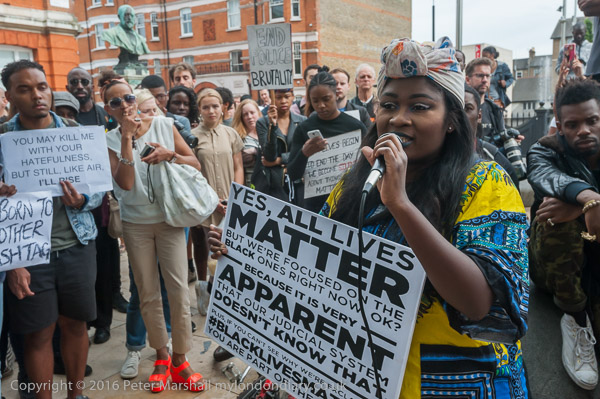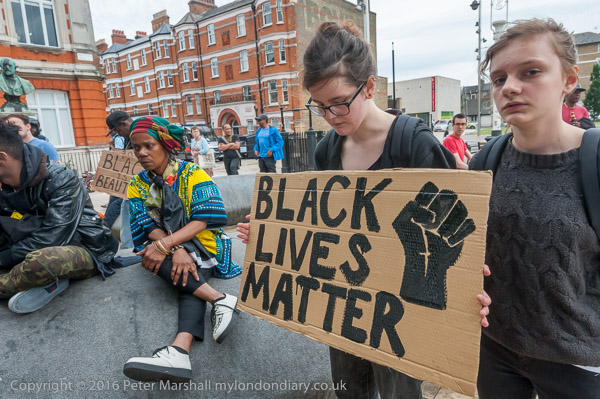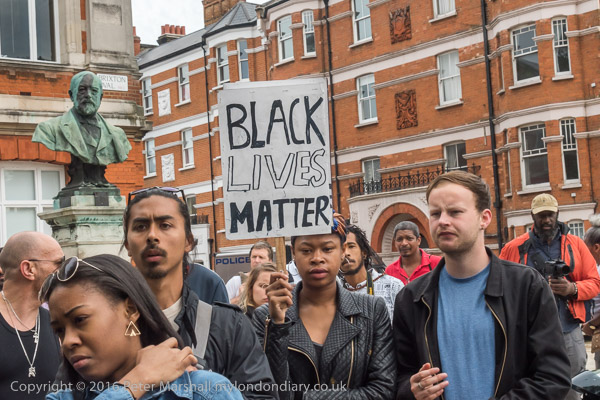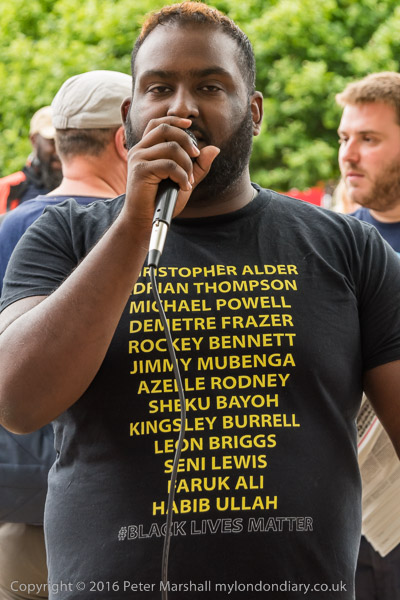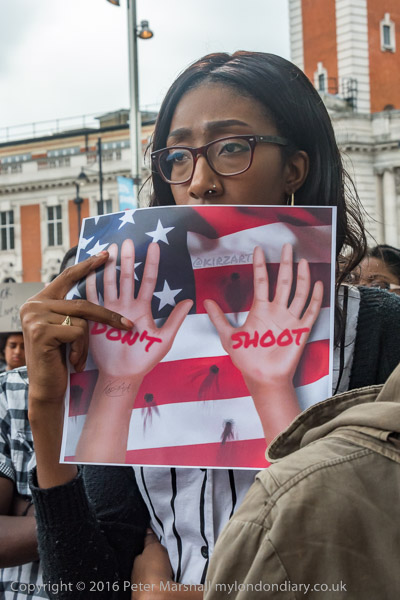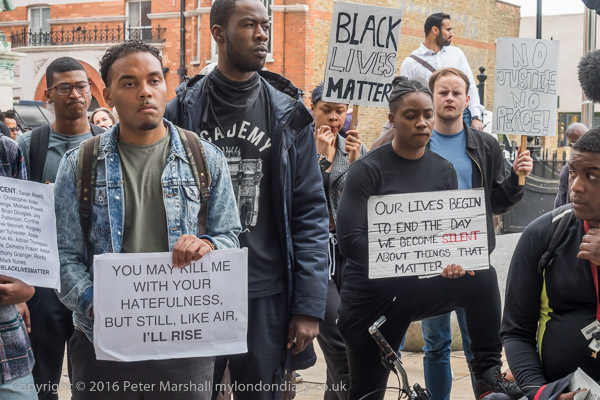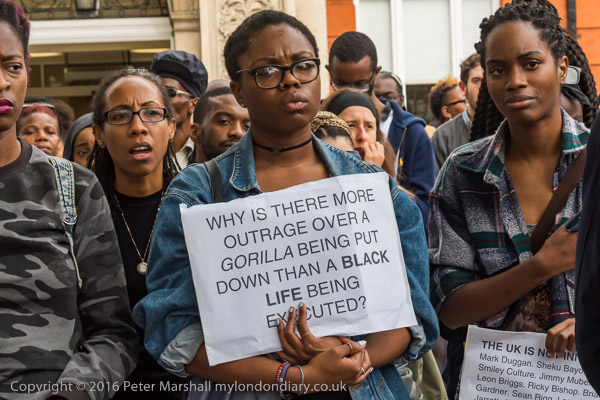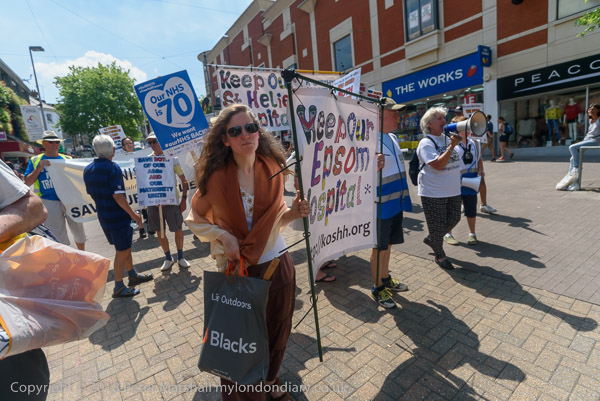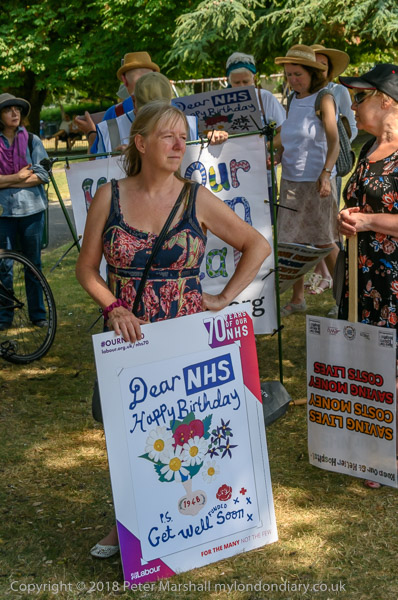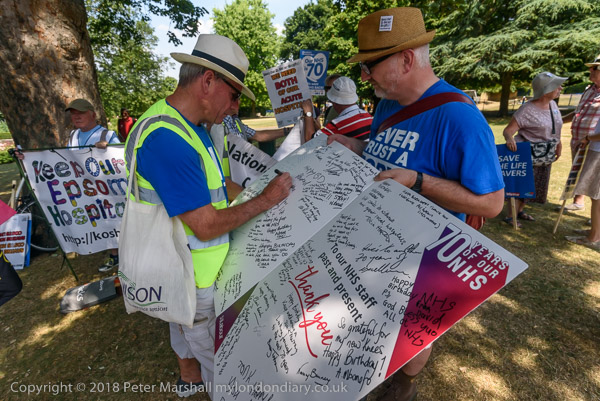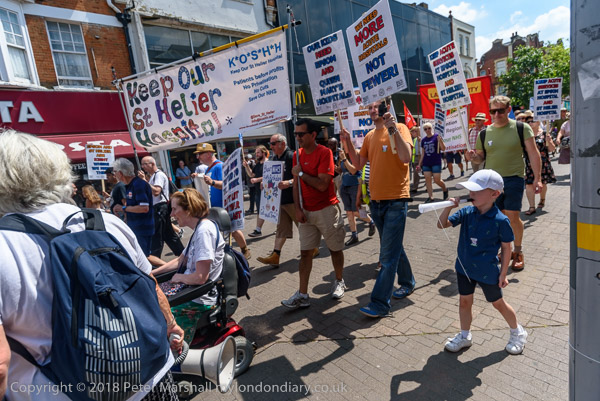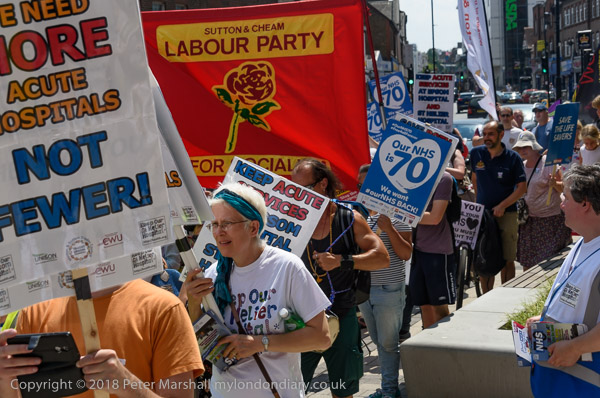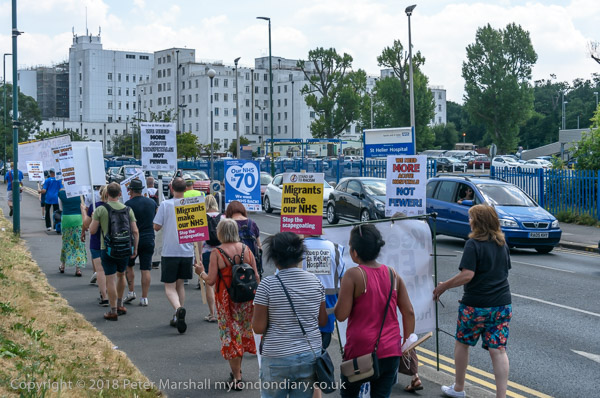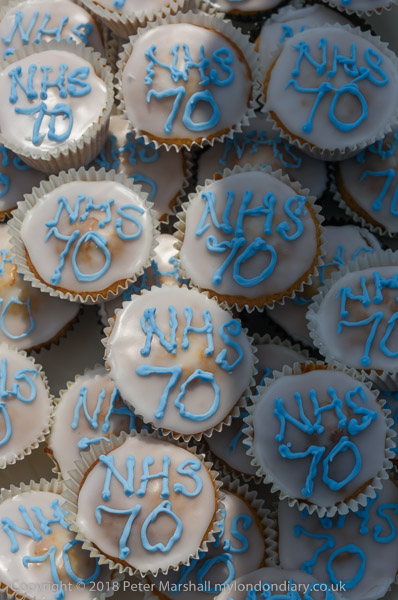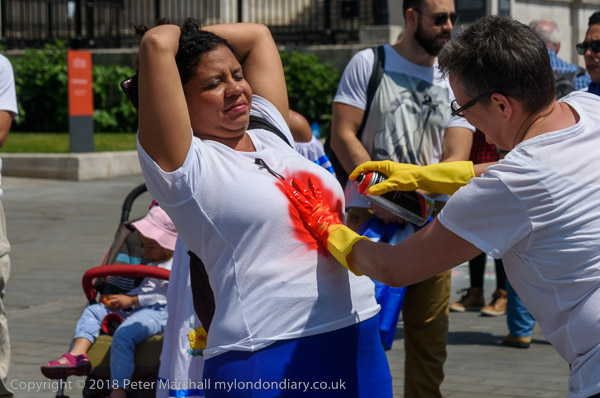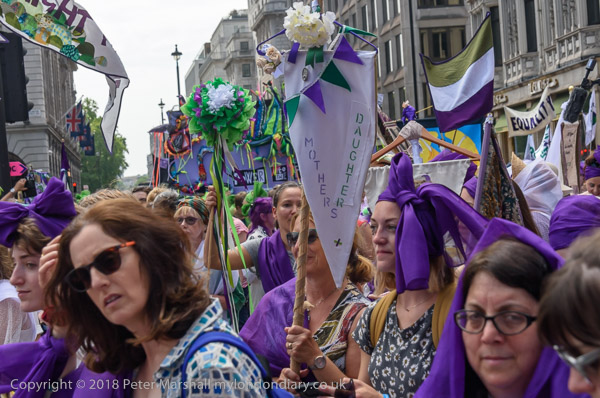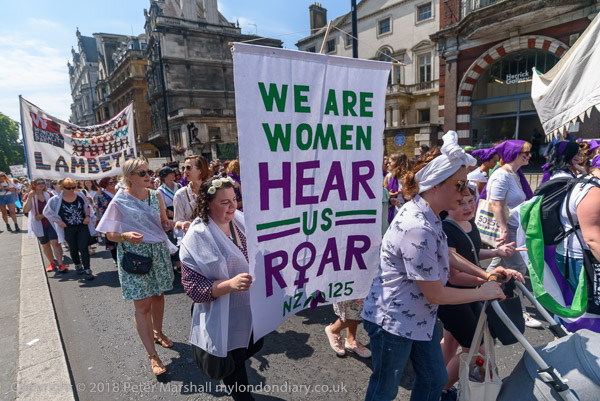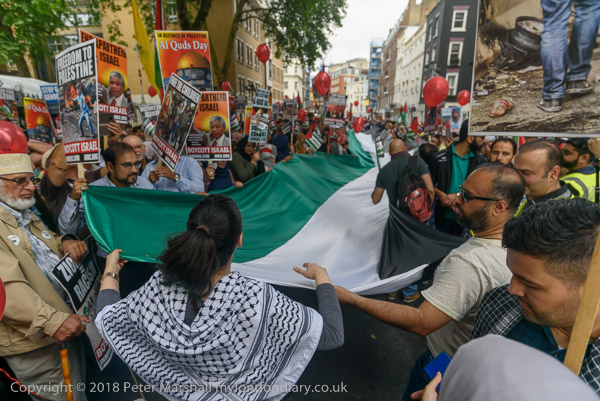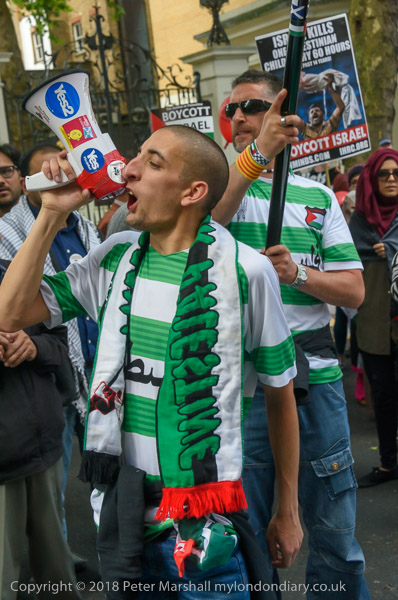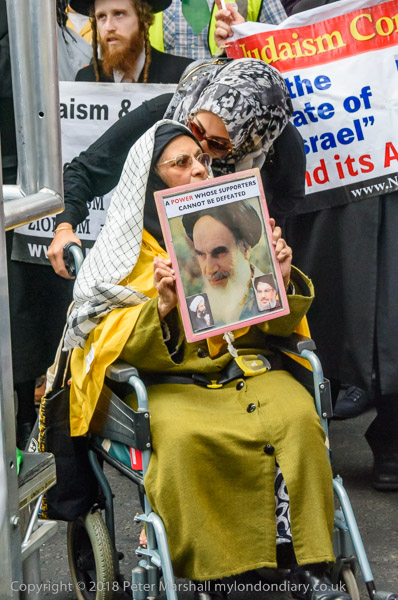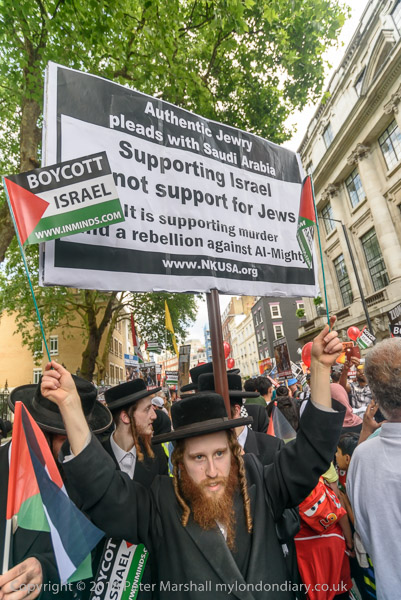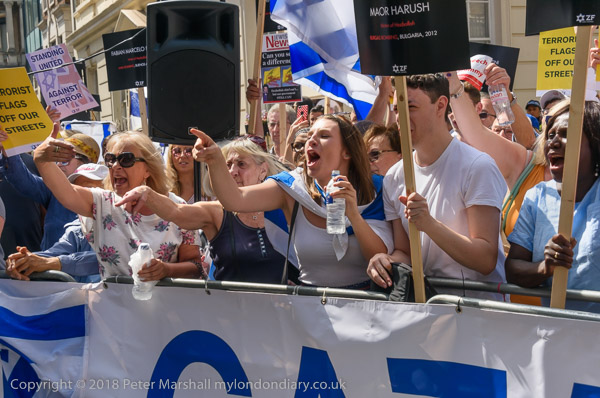Here is a long post I wrote on My London Diary in 2011. I have made only minor changes, mainly adding more pictures. Otherwise it is as written.
Portland Place to Trafalgar Square, London. Sunday 21 Aug 2011
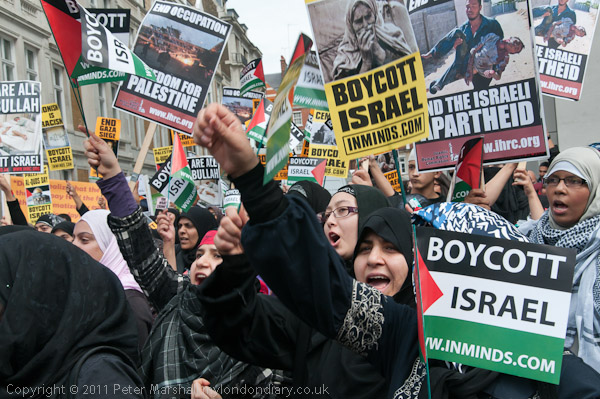
more pictures
Several thousand marched through London calling for freedom for Palestine in the annual Al Quds (Jerusalem) Day march. There were small counter-demonstrations by an Iranian opposition group and the EDL.
Al-Quds is the Arabic name for Jerusalem and Al Quds Day was started by the late Imam Khomeini of Iran as an expression of solidarity with the Palestinian people and of opposition to the Israeli control of Jerusalem, as well as more widely “a day for the oppressed to rise and stand up against the arrogant.” It is on the last Friday of Ramadan which this year is 26 Aug, but the march in London took place on the Sunday before this. Most of those taking part were Muslim and were observing the Ramadan fast.
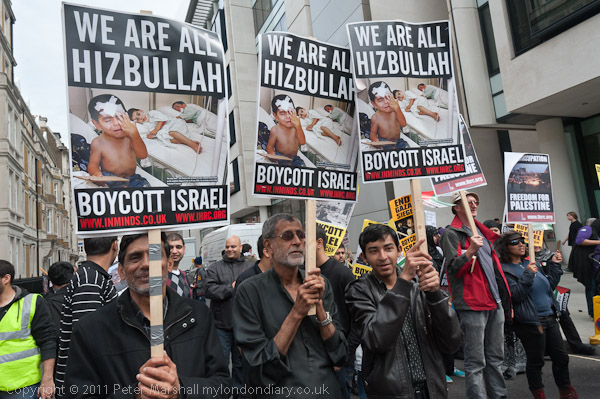
The march is organised by the Islamic Human Rights Commission, an organisation that receives funding from the Iranian government. Despite this and the appalling human rights record of the Iranian Government the IHRC does carry out much worthwhile research and campaigning, including whole-hearted support of the Palestinian cause.
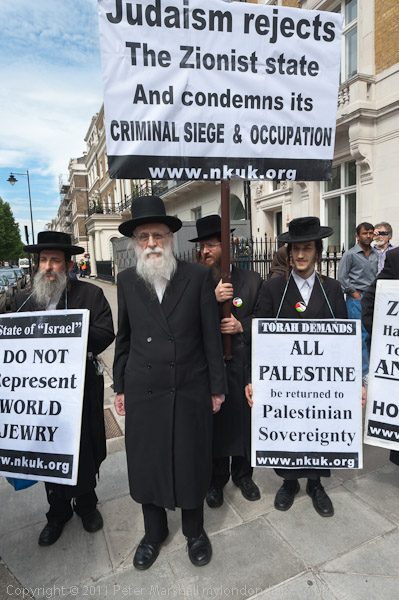
The proclamation of Al Quds day and its annual celebration have helped to revitalise worldwide interest in freedom for Palestine, and the even is supported by a number of mainstream UK campaigning organisations including the Stop the War Coalition and Ireland and Scottish Palestine Solidarity Campaigns, as well as major Muslim groups including the Muslim Association of Britain and Muslim Council of Britain. Also backing it, and present on the march were several Jewish groups including Jews Against Zionism, Jews for Boycotting Israeli Goods and Neturei Karta UK as well as other groups supporting Palestine.
The marchers, many of whom had come in coaches from around the country, gathered on Portland Place from a little before 2pm, and many said prayers on the pavement before the march formed up.
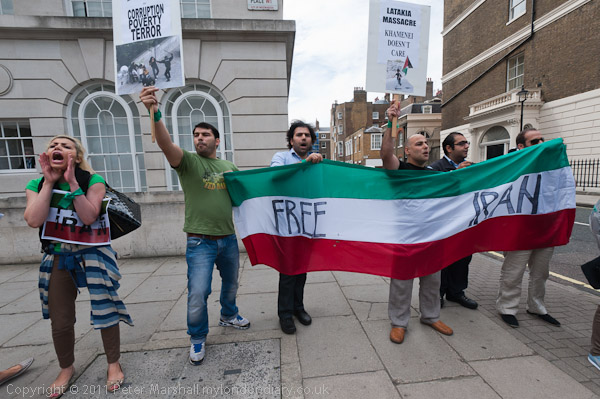
Shortly after this, a small group of protesters against the Iranian regime began a protest against them immediately opposite on the other side of the road. As I walked across the road towards them a police officer stopped me and gave me a warning that some of them or their families might face prosecution if their photographs appeared in the press, and because of this I might not be welcome. I thanked him for the advice and continued across and it was clear that the protesters actually welcomed the attention of myself and the other press photographers present.
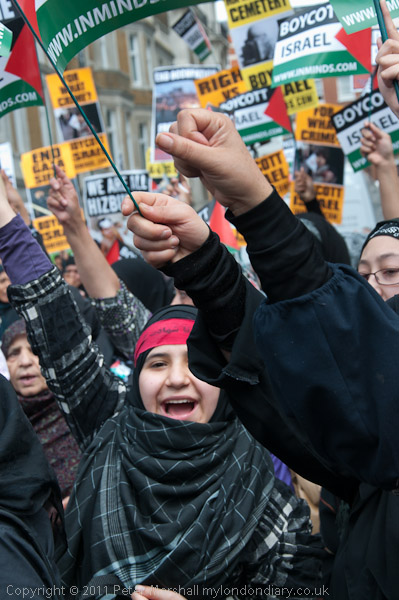
The two groups remained in position, chanting slogans at each other for the next hour or so, while the very much larger group on the Al Quds march waited for marchers whose coaches had been held up in traffic. Although many of the marchers carried placards with the message ‘We are all Hizbullah’ and there were chants of this along with ‘We are all Palestinians’, and their were graphic images of victims of Israeli attacks on Palestinians, the main emphasis was on the need to boycott Israel and companies that support Israel, among those mentioned being Marks and Spencer, Starbucks and Coca-Cola.
A huge cheer went up when the Neturei Karta ultra-orthodox Jews arrived, having walked from Stamford Hill. They carried placards which repeated their opposition to Zionism and support for the Palestinians, and when the march started they were more or less at the front, accompanied by several Muslim clerics. The marchers made clear that they were not anti-Jewish and welcomed the support of these and other Jewish groups present opposed to Zionism and the illegal actions of the Israeli forces.
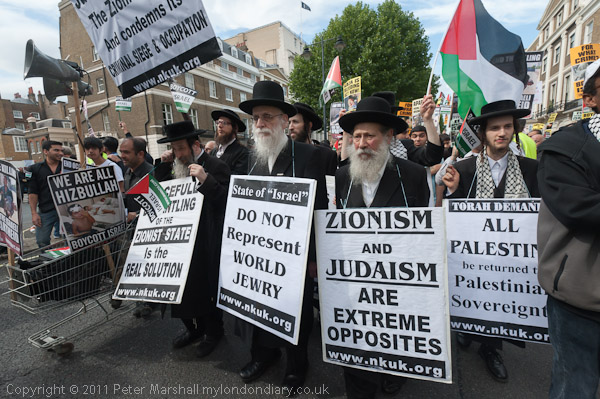
It was an impressive march, with almost all of those taking part carrying banners, placards or small Palestinian flags. There were also several very large Palestinian flags, including a very long one carried horizontally.
The route went down Regent Street and through Piccadilly Circus to Haymarket and then on to Trafalgar Square. Several EDL supporters watched it as it came to the bottom of Haymarket and police questioned two of them briefly. As the march turned into the top of Trafalgar Square four more came to see it and I saw police briefly question two women, one of whom had stood raising a finger to the front of it. Apparently two others were also questioned briefly.
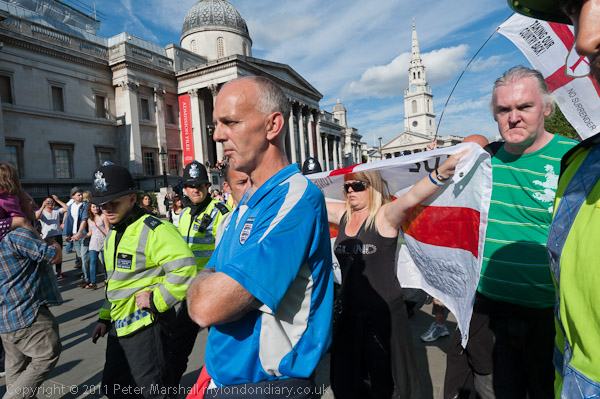
Police escort EDL from Trafalgar Square to the pen set aside for them
more pictures of the EDL
The police had provided a small pen for the EDL on the south side of Pall Mall at the mouth of Spring Gardens, where they were almost invisible to the marchers who were turning into Trafalgar Square. It seemed to them – and I could only agree – to have been an unacceptably distant location.
A few of the EDL were standing closer, quietly watching the march and one was taking photographs. The police appeared not to recognise them. Later a number of them walked into Trafalgar Square and walked quietly around, but other photographers reported a small incident where one man who police had previously asked to leave the area returned and was apparently arrested.
A few minutes later a small group of EDL appeared with an EDL flag on the North Terrace balcony. They were soon surrounded by police who escorted them back down to the pen amid their complaints that British people should be allowed to demonstrate on the British soil of Trafalgar Square and show their English flag there. In all there seemed to be around twenty EDL supporters present.
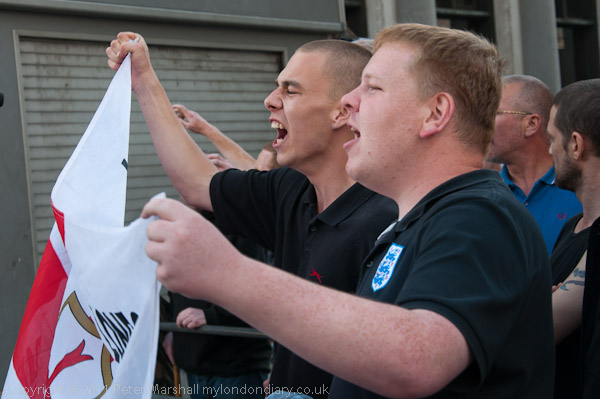
Short speeches from several of those present stated that they were opposed to the Al Quds march because it supported Hizbullah, an illegal terrorist organisation, and restated their position that they were non-racist and not opposed to Muslims in general only to Muslim extremists. They insist that they are standing up for England and our English freedoms and have no problems with other people living here as long as they respect our way of life. There were a few moments when individuals started some of the chants which others object to, including ‘Muslim bombers off our streets’, but while I was there others present quickly told them to “shut it.”
The group continued to protest noisily but were too far away to be heard by the several thousand at the rally in Trafalgar Square.
more pictures
All photographs on this and my other sites, unless otherwise stated, are taken by and copyright of Peter Marshall, and are available for reproduction or can be bought as prints.
